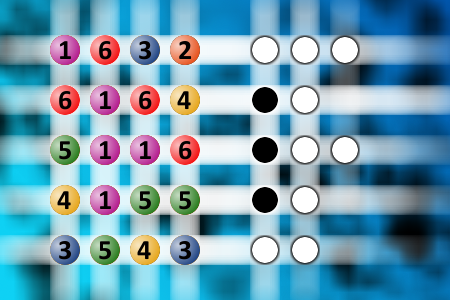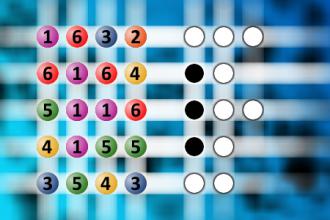What a winning combination?
The computer chose a secret code (sequence of 4 digits from 1 to 6). Your goal is to find that code. Black circles indicate the number of hits on the right spot. White circles indicate the number of hits on the wrong spot.Correct answers: 31
The first user who solved this task is Thinh Ddh.
#brainteasers #mastermind

Stung by a bee
A woman taking golf lessons had just started her first round when she was stung by a bee. Distraught, she went back into the clubhouse and told her golf teacher about the incident.
"Where did it sting you?" he asked.
"Between the first and second hole," she replied.
He shook his head and said: "That’s your problem right there. You had your feet too far apart!"

